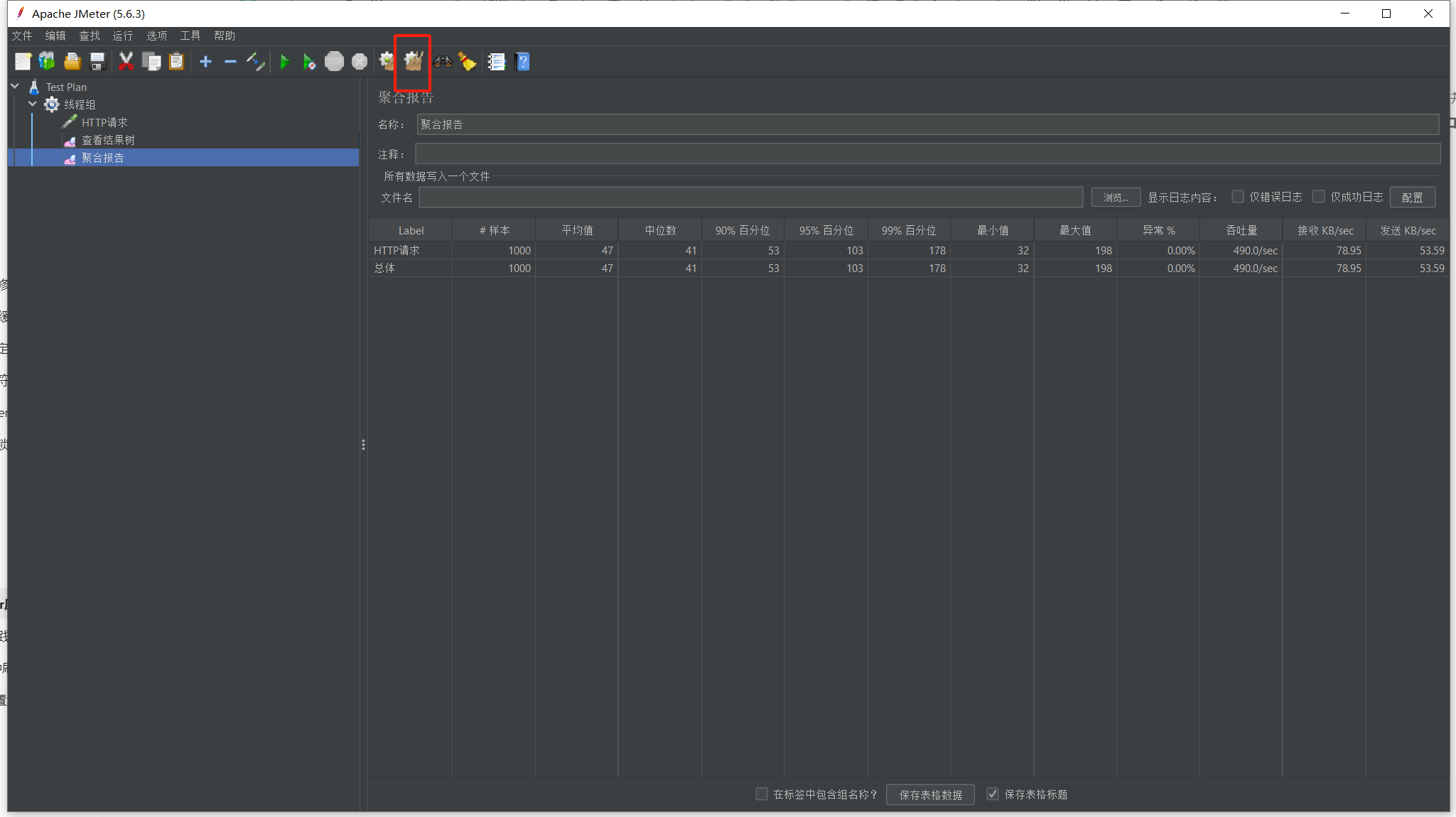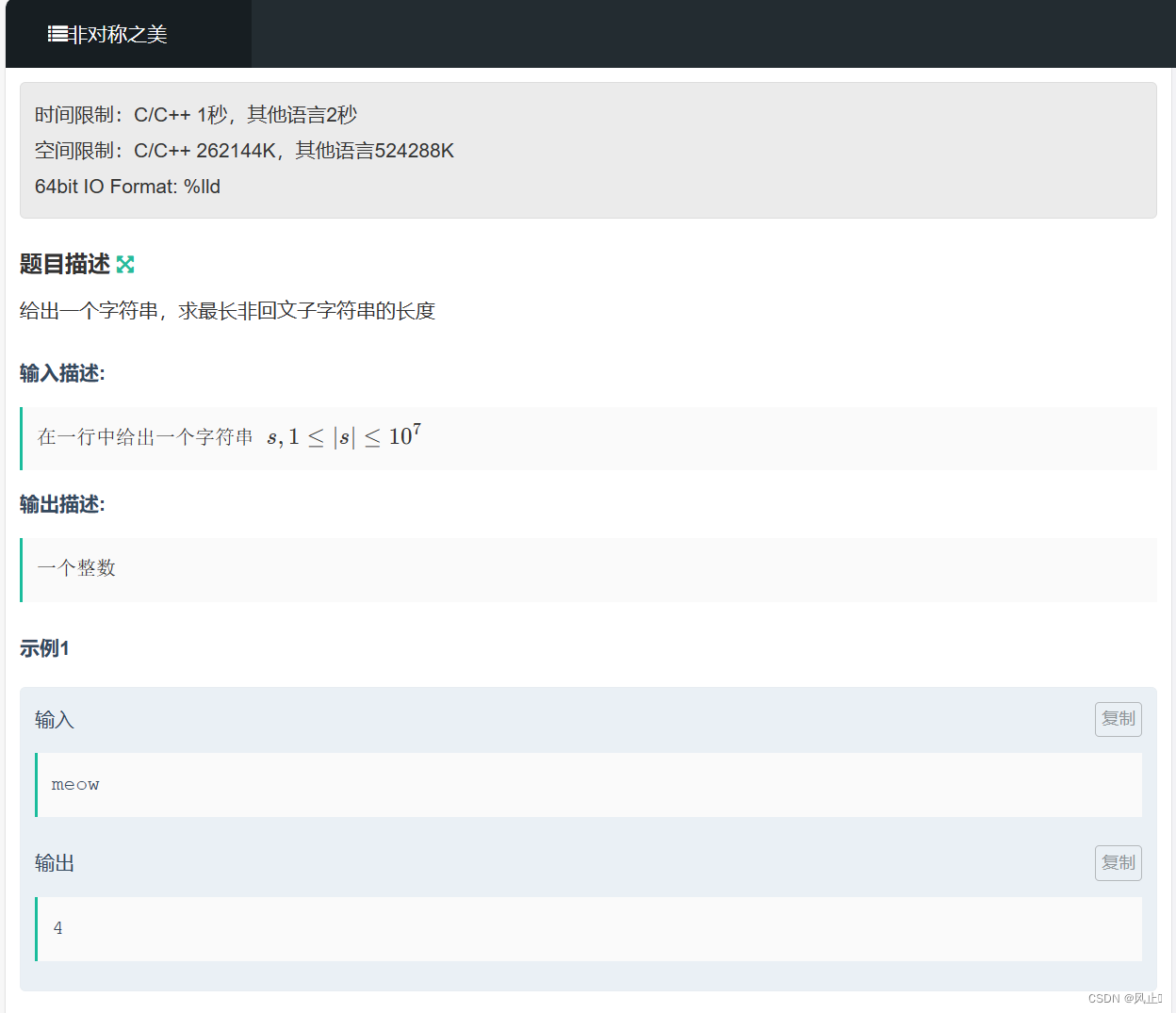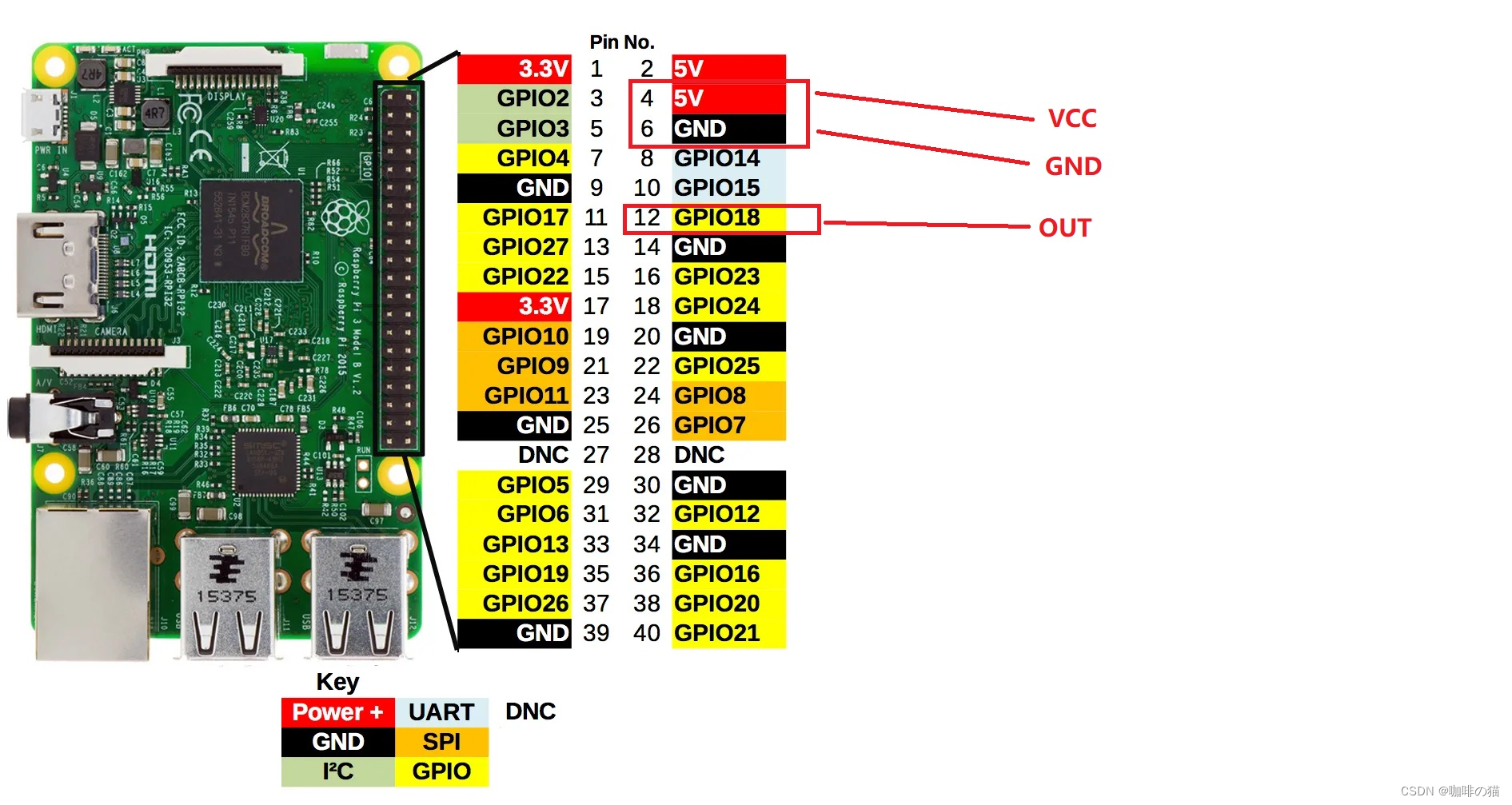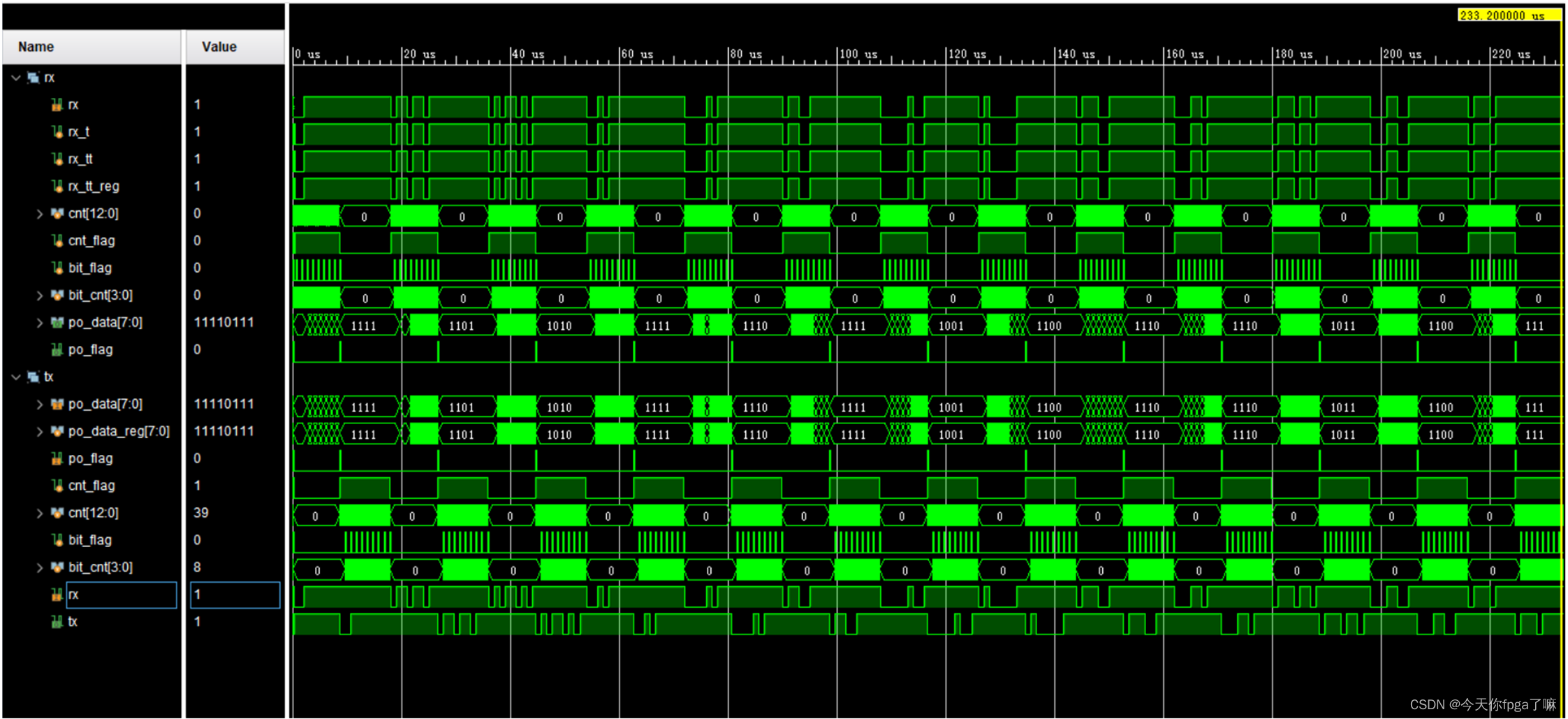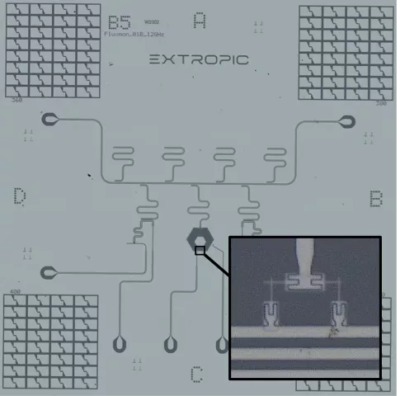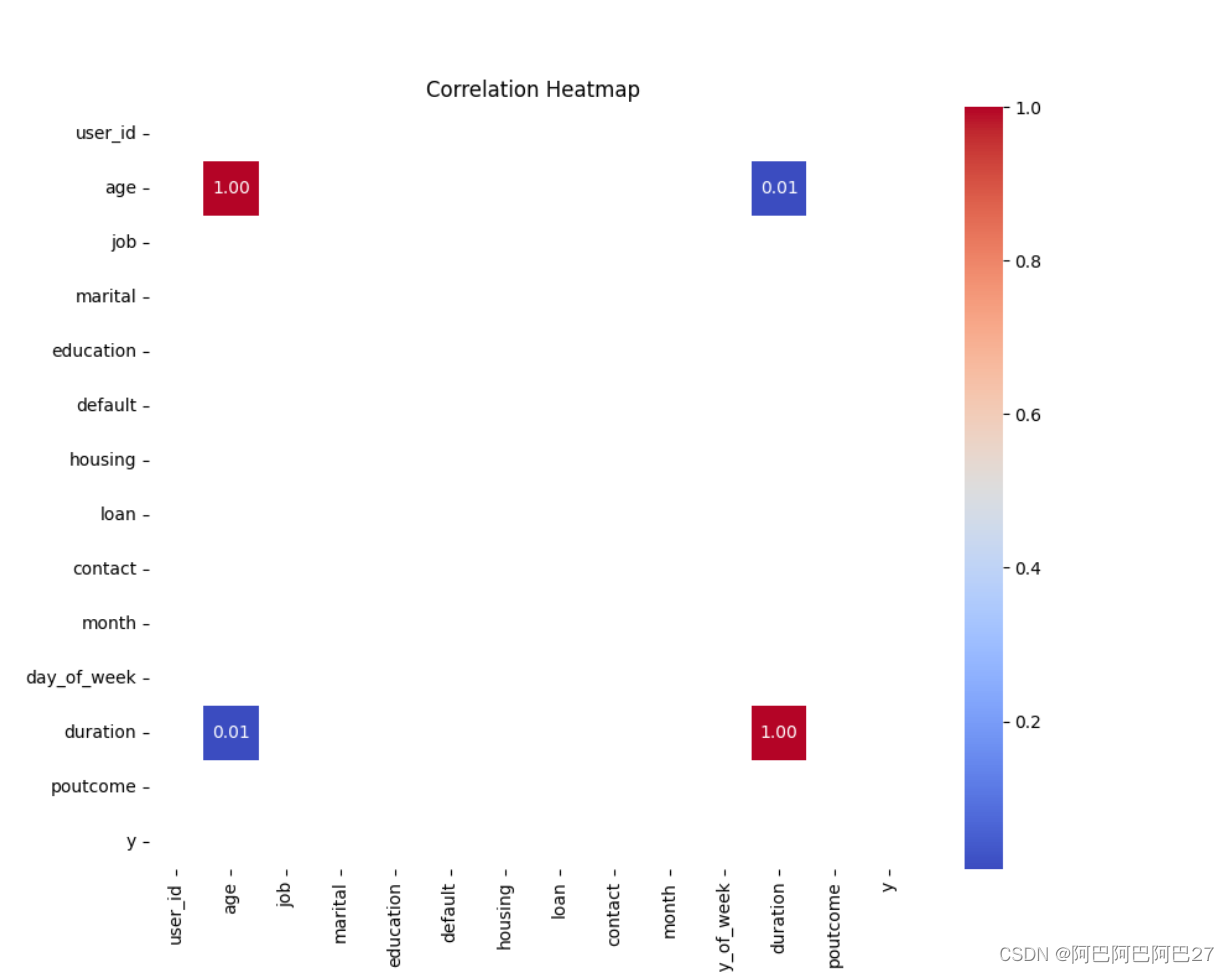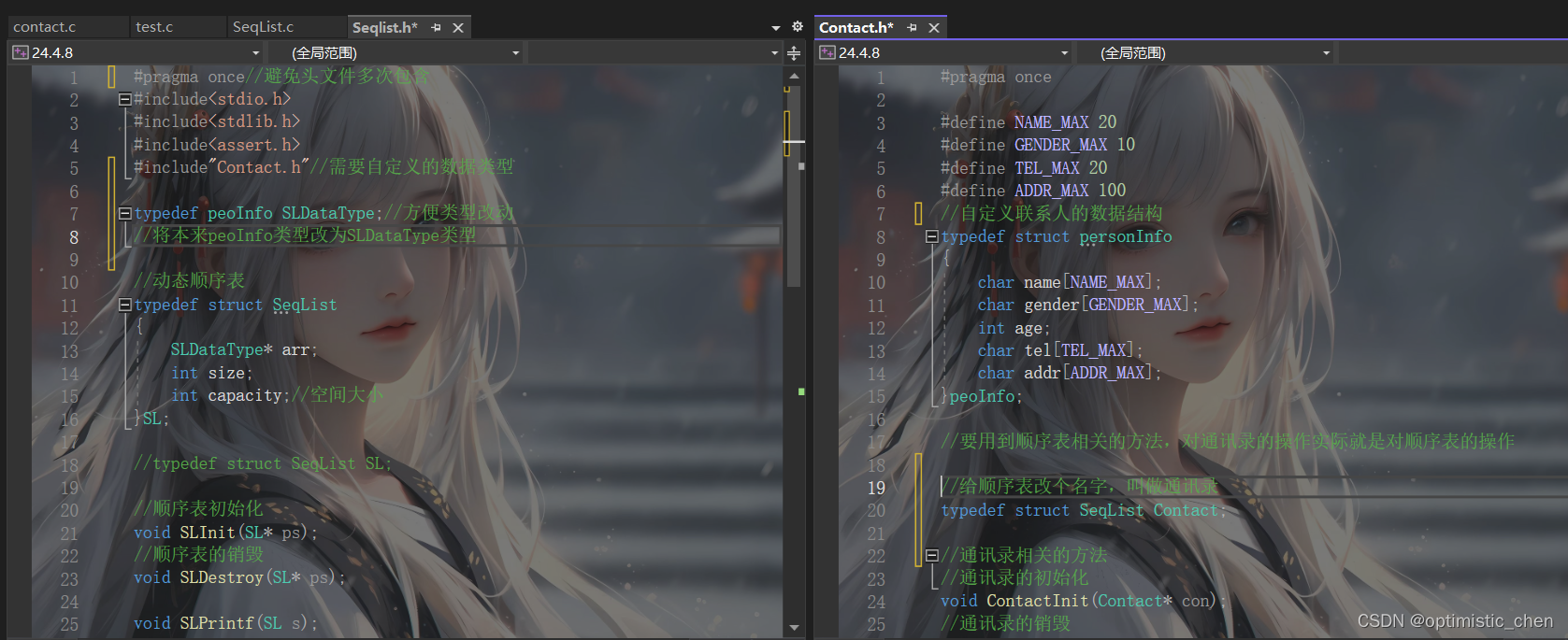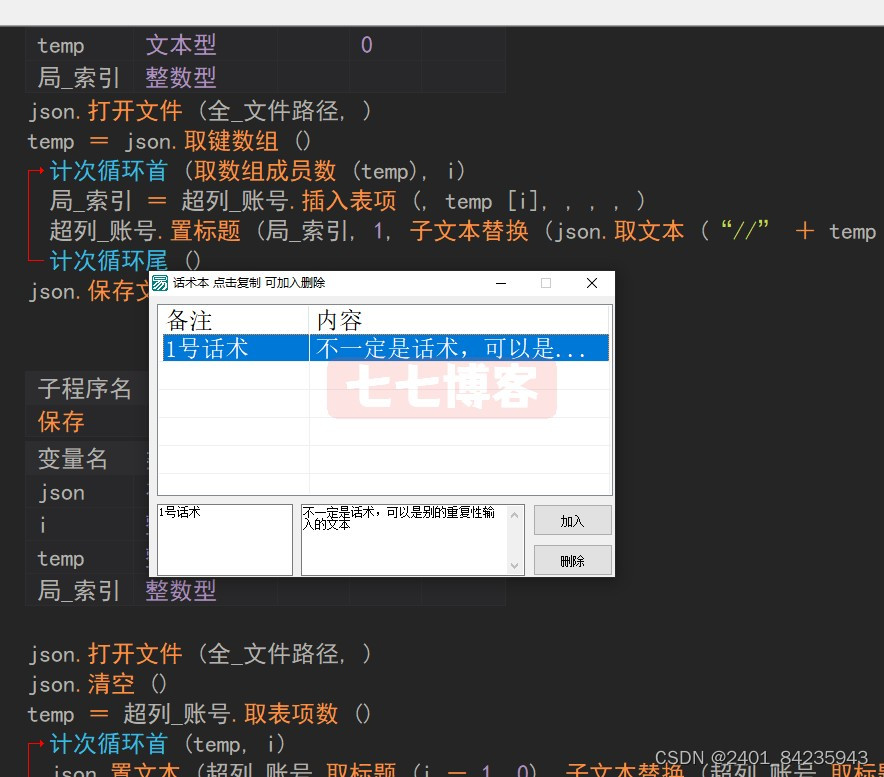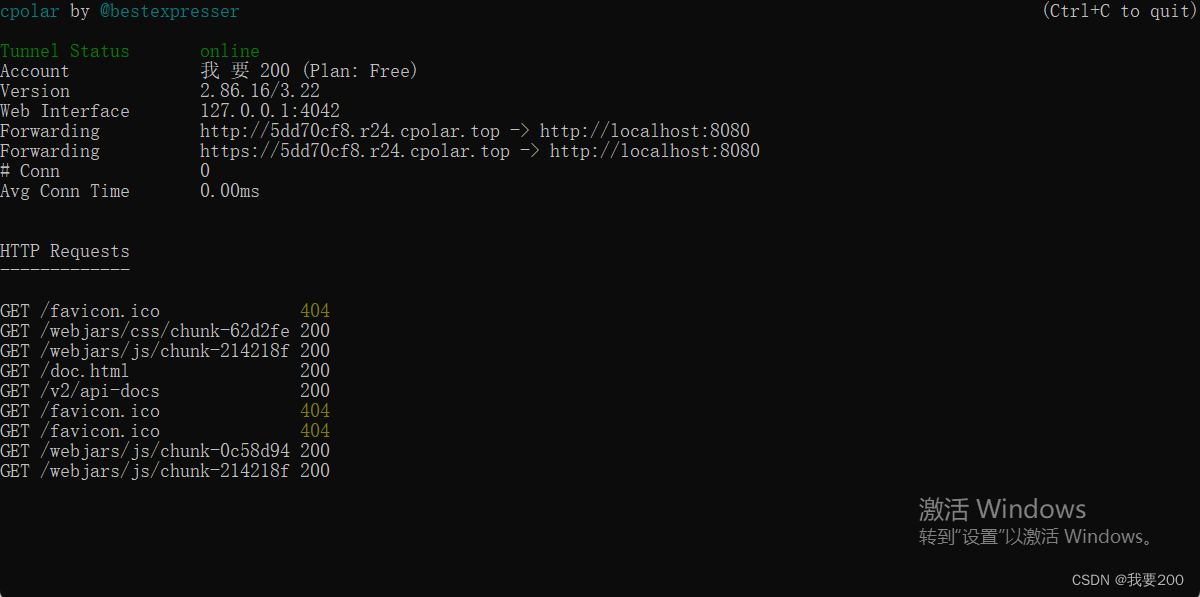「网络流 24 题」太空飞行计划
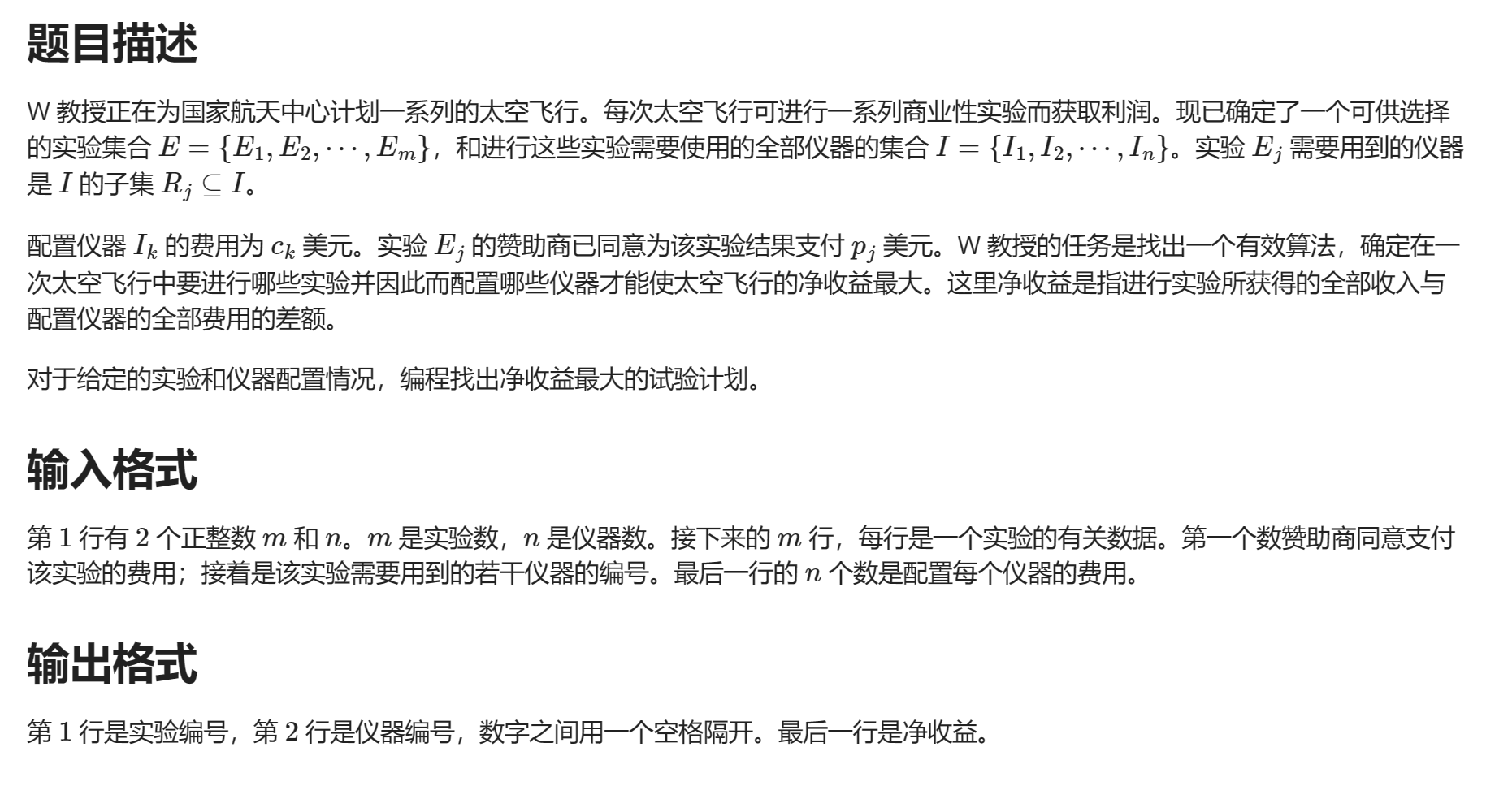
题意
有 n n n 个实验 和 m m m 个器械,每个实验都需要若干个指定的器械才能进行
实验 i i i 的盈利为 p i p_i pi, 器械 j j j 的花销为 c j c_j cj
找出纯利润最大的实验计划
思路
这是非常典型的最大权值闭合图的题型
可以在 OI WIKI 学习
我们将实验和器械都建模成点,对于实验
i
i
i 所需要的所有器械
j
j
j,我们连边
i
→
j
i \rarr j
i→j,边权为
∞
\infty
∞
同时对于实验
i
i
i,由于其盈利为正,相当于点权为正,那么连边:
s
→
i
s \rarr i
s→i
对于器械
j
j
j,花销相当于负点权,我们连边:
j
→
t
j \rarr t
j→t
正常地跑最大流最小割,答案就是正点权之和减去最小割
// Problem: #6001. 「网络流 24 题」太空飞行计划
// Contest: LibreOJ
// URL: https://loj.ac/p/6001
// Memory Limit: 256 MB
// Time Limit: 1000 ms
//
// Powered by CP Editor (https://cpeditor.org)
#include<bits/stdc++.h>
#define fore(i,l,r) for(int i=(int)(l);i<(int)(r);++i)
#define fi first
#define se second
#define endl '\n'
#define ull unsigned long long
const int INF=0x3f3f3f3f;
// const long long INFLL=0x3f3f3f3f3f3f3f3fLL;
typedef long long ll;
constexpr int inf = 1E9;
template<class T>
struct Dinic {
struct _Edge {
int to;
T cap;
_Edge(int to, T cap) : to(to), cap(cap) {}
};
int n; //点的数量,编号从 1 开始
std::vector<_Edge> e; //链式前向星
std::vector<std::vector<int>> g; //起到链式前向星nxt的作用
std::vector<int> cur; //当前弧优化
std::vector<int> h; //深度
Dinic() {}
Dinic(int n) {
init(n);
}
void init(int n) {
this->n = n;
e.clear();
g.assign(n + 1, {});
cur.resize(n + 1);
h.resize(n + 1);
}
bool bfs(int s, int t) { //构造分层图
h.assign(n + 1, -1);
std::queue<int> que;
h[s] = 0;
que.push(s);
while (!que.empty()) {
const int u = que.front();
que.pop();
for (int i : g[u]) {
auto [v, c] = e[i];
if (c > 0 && h[v] == -1) { //下一层有容量的邻居
h[v] = h[u] + 1;
if (v == t) {
return true;
}
que.push(v);
}
}
}
return false;
}
T dfs(int u, int t, T f) {
if (u == t) {
return f;
}
auto r = f;
for (int &i = cur[u]; i < int(g[u].size()); ++i) {
const int j = g[u][i];
auto [v, c] = e[j];
if (c > 0 && h[v] == h[u] + 1) {
auto a = dfs(v, t, std::min(r, c));
e[j].cap -= a;
e[j ^ 1].cap += a;
r -= a; //r是剩余可用流量
if (r == 0) {
return f; //如果r用完,说明f跑满了
}
}
}
return f - r; //否则f-r就是已用流量
}
void addEdge(int u, int v, T c) {
g[u].push_back(e.size()); //记录在e中的下标
e.emplace_back(v, c);
g[v].push_back(e.size()); //反向边
e.emplace_back(u, 0);
}
T flow(int s, int t) {
T ans = 0;
while (bfs(s, t)) {
cur.assign(n + 1, 0); //当前弧初始化
ans += dfs(s, t, std::numeric_limits<T>::max());
}
return ans;
}
std::vector<bool> minCut() { //最小割
std::vector<bool> c(n + 1);
for (int i = 1; i <= n; i++) {
c[i] = (h[i] != -1);
}
return c;
}
struct Edge {
int from;
int to;
T cap;
T flow;
};
std::vector<Edge> edges() {
std::vector<Edge> a;
for (int i = 0; i < e.size(); i += 2) {
Edge x;
x.from = e[i + 1].to;
x.to = e[i].to;
x.cap = e[i].cap + e[i + 1].cap;
x.flow = e[i + 1].cap;
a.push_back(x);
}
return a;
}
};
int main(){
std::ios::sync_with_stdio(false);
std::cin.tie(nullptr);
std::cout.tie(nullptr);
int n, m;
std::string s;
std::getline(std::cin, s);
std::stringstream ss(s);
ss >> n >> m;
Dinic<int> dinic(n + m + 2);
int S = n + m + 1, T = S + 1;
int sum = 0;
fore(i, 1, n + 1){
std::string s;
std::getline(std::cin, s);
std::stringstream ss(s);
int w;
ss >> w;
sum += w;
dinic.addEdge(S, i, w);
int v;
while(ss >> v){
dinic.addEdge(i, v + n, std::numeric_limits<int>::max());
}
}
fore(v, 1, m + 1){
int w;
std::cin >> w;
dinic.addEdge(v + n, T, w);
}
int ans = sum - dinic.flow(S, T);
auto c = dinic.minCut();
std::vector<int> test, eqt;
fore(i, 1, n + 1)
if(c[i]) //位于集合 S
std::cout << i << ' ';
std::cout << endl;
fore(i, 1, m + 1)
if(c[i + n]) //位于集合 S
std::cout << i << ' ';
std::cout << endl;
std::cout << ans;
return 0;
}

